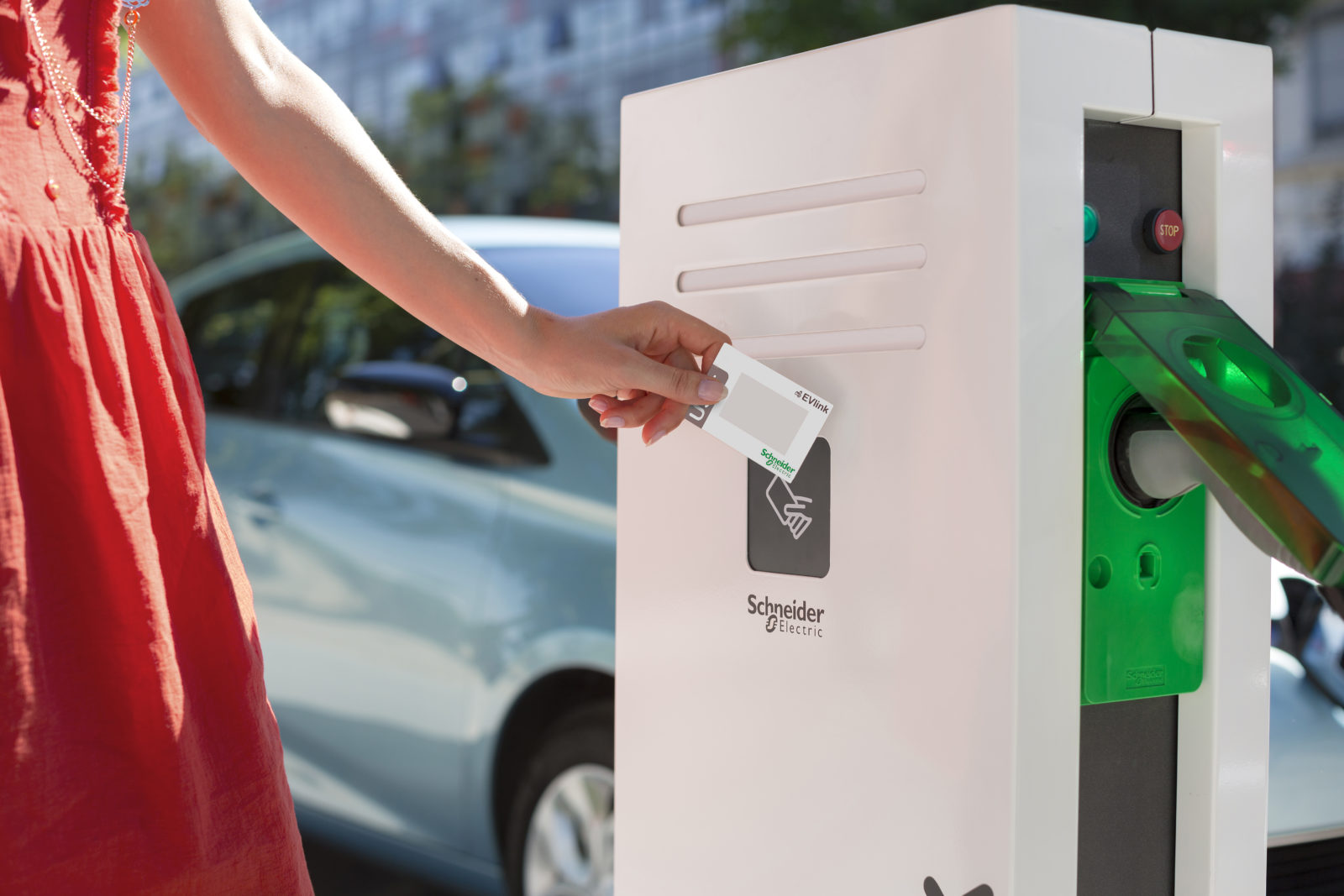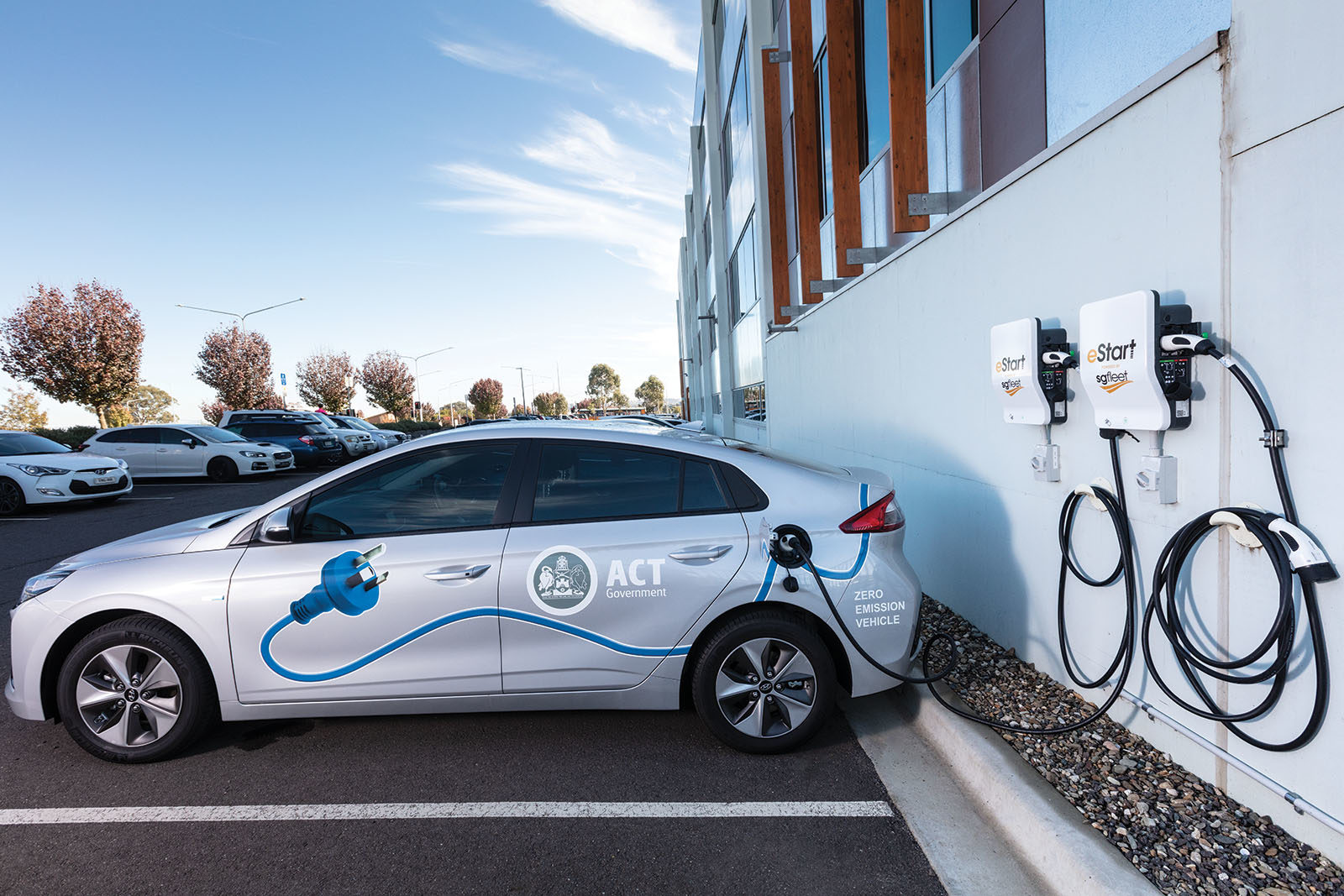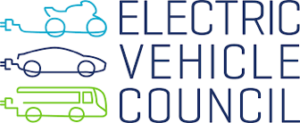About
sgfleet’s eStart Zero Emission Vehicle Transition Plan helps you plan and budget for transitioning to a zero emission vehicle (ZEV) fleet.
Amidst increased concern about the future of our planet and the urgent need for clean energy, our state governments are making public commitments to invest in Electric Vehicle Service Equipment (EVSE) as well as zero emission vehicles (ZEVs) for their own fleets.
sgfleet has worked with industry bodies, suppliers and manufacturers to understand what is required to help our customers prepare for the addition of ZEVs or hybrids to their current fleets in order to reduce operating costs, lower CO2 emissions and meet other environmental goals.
As we have explored options for our own fleet across our offices nationwide, we have come to understand the complex and often unique requirements of each individual charging and parking site.
sgfleet’s eStart ZEV Transition Plan offers an end-to-end planning solution that includes assessment of a company’s goals, vehicle-by-vehicle review, site inspections, infrastructure upgrades and installation of charging points to help effectively plan and manage budget expectations. Through our deep knowledge of your fleet, we will be able to manage the whole-of-life vehicle cost and recommend the right vehicle mix to support your goals.


Benefits:
- Support your company’s environmental and sustainability goals
- Showcase a commitment to exploring alternative power supplies
- Leverage our understanding of the challenges and pitfalls of site enablement
- Gain clarity on what is required for your unique site enablement, charging points and other infrastructure needs
- Reduce ‘fuel’ and maintenance costs
- Plan your budget for both strategic and operational future needs
- Be prepared for ZEVs transitioning into a fleet

Product overview
Preparing your fleet for the future.
The eStart Zero Emission Vehicle Transition Plan supports the transition of your fleet.
eStart is an end-to-end planning solution. Each step in the process builds on the preceding in a structured, logical manner, with options and considerations at every stage to ensure a fit-for-purpose fleet.
Successful implementation starts with getting the fundamentals right.
sgfleet is committed to preparing your fleet for the future.


Customer goals
- Preparation for ZEVs
- Reduction in CO2 emissions
- Reduction in fuel and maintenance costs
- Reputational / green credentials
Vehicle mix
- Current fleet (against goals)
- Vehicle usage patterns (locations, frequency, distance traveled)
- Vehicle types not suitable for ZEV at this stage
- Future fleet make-up
Site selection
- Where are the vehicles located?
- Where do the vehicles travel to?
- Where do the vehicles need to be charged?
- When will they be charged (at night, during the day etc)?
Site capability
- Existing electrical infrastructure (supply, load capacity, compliance)
- Proposed charging locations on site
- Building situation – own, rent, duration of rent, etc.
Transition plan
- What are the existing fleet’s lease end dates?
- When are the ZEVs available?
- Which sites need to be enabled first?
- Do other leases need to be extended?
Funding Support
- Paid for outright (via sgfleet)
- Funded via own mechanisms
- Leased / funded through sgfleet
Frequently asked questions
ICE – Internal Combustion Engine – ICEs generate mechanical power by burning a liquid fuel (such as petrol, diesel, or biofuels) or a gaseous fuel (such as compressed natural gas). They are the most common power source currently used in vehicles.
ZEV – Zero Emission Vehicle – ZEVs include BEVs, FCEVs and some PEVs.
BEV – Battery Electric Vehicle – BEVs are powered only by one or more electric motors. They receive electricity by plugging into the grid and store it in batteries. They do not use any type of fuel while driving and produce no tailpipe emissions.
PEV – Plug-in Electric Vehicle – PEVs derive all or part of their power from electricity supplied by the electric grid. They include BEVs and PHEVs.
FCEV – Fuel Cell Electric Vehicle – FCEVs combine hydrogen and oxygen to power an electric motor (rather than using conventional fuels or a battery) and do not produce any tailpipe emissions.
PHEV – Plug-In Hybrid Electric Vehicle – PHEVs use batteries to power an electric motor, plug into the electric grid to charge, and use petrol or other sources of fuel to power an ICE or other propulsion source.
HEV – Hybrid Electric Vehicle – HEVs combine an ICE or other propulsion source with batteries, regenerative braking, and an electric motor. They rely on petrol or other source of fuel and are not plugged in to charge. HEV batteries are charged by the ICE or other propulsion source and during regenerative braking.
EVSE – Electric Vehicle Supply Equipment – Vehicle chargers delivering electrical energy from an electricity source to the vehicle.
WLTP – Worldwide Harmonised Light Vehicles Test Procedure – The new standard for testing the levels of fuel consumption, CO2 emissions and other pollutants of vehicles. WLTP has replaced older test standards for light duty vehicles in most European countries, but is not mandatory in Australia, where the Australian Design Rule testing continues to be based on the older European standard. WLTP is designed to provide more ‘real life’ consumption and emission figures.
Kilowatt (kW) – Measurement of power output of the motor.
Kilowatt hour (kWh) – Measurement of electricity used in an hour. Manufacturers use kWh to refer to the size of the battery. Generally the higher the number, the more hours the battery will last, allowing for a greater driving range.
- ZEVs produce no tailpipe emissions
- ZEVs are quiet due to absence of engine noise
- ZEVs may help have lower operating costs of fuel and maintenance, reducing the total cost of ownership
- ZEVs have fewer moving parts and don’t require oil changes (less waste disposal)
- ZEVs have a higher expected longevity than that of a traditional ICE vehicle, with less to go wrong
- ZEV performance is now at least equal to that of an ICE vehicle
- ZEVs have a smooth drive, with no gear changes and minimal braking and in most scenarios the performance is ‘exciting and fun’
- ZEV charging costs a fraction of the cost of fuelling an ICE vehicle
- Affordable ZEVs are here now
Pure ZEVs operate on electric power only. Plug-in hybrid ZEVs can operate on electric power for about 20-50 kilometres and can then extend their range
by converting to a conventional ICE with the ability to quickly refuel at a traditional petrol station.
Plug-in hybrids benefit drivers who travel mostly short distances, while also providing peace of mind with the unlimited range potential of a traditional ICE vehicle.
Affordable ZEVs are here now. Hyundai, Nissan, Renault and several other manufacturers are bringing models to Australia starting at $35,000 for vehicles with a 180 kilometre range and up to $55,000 for vehicles with a 430 kilometre range. Prestige and performance brands such as Tesla, Porsche, BMW and Mercedes have models available starting at $55,000.
There are a number of nationwide charge networks emerging in Australia, such as Chargefox, ChargePoint and Evie, with the latter two offering a number of ultra-fast chargers. These complement the 600+ (and growing) public charge locations around Australia.
Every state has a 3-phase charger or better within 300 kilometres of each other.
The “Round Australia” charge network has charging locations all over Australia, with none more than 400 kilometres apart. This is sufficient for Tesla vehicles and the newer vehicles such as the Hyundai Kona.
The focus continues to be on work and location-based fast charging and sgfleet will support customers as they consider their ZEV charging requirements. Home-based charging is available anywhere with a traditional 240 volt wall socket, however smart devices are being developed to allow faster charging at affordable prices at home.
It depends on the model of the car, but on average, ZEVs can travel between 230 and 400 kilometres on a single charge. Most people drive less than 50 kilometres per day which is well within the range of most ZEVs. For example, a $45,000 Hyundai Ioniq ZEV would need charging once every five days for the average driver. If you want to get a longer range, a Hyundai Kona has a reported range of over 400 kilometres, while the Tesla Model S can travel up to 600 kilometres on a single charge.
The lifespan depends on the type of battery and its usage patterns. Most vehicles are using lithium-ion batteries, which can last up to 10 years or longer. Most manufacturers are offering an 8-year battery warranty.
The charge time for a ZEV varies based on the model of car and the type of Electric Vehicle Service Equipment (EVSE) you use to charge the vehicle. One thing to keep in mind is the difference between the time for a full charge and a partial charge.
What does this mean? Many cars will advertise that it takes 5-8 hours for a full charge, but it may only take 15-20 minutes for a 60% charge. A full charge could be done overnight, while partial charges could be done anytime to top up the battery. It is expected that vehicle charging might be similar to that of a mobile phone, where it is occasionally plugged in for a top-up charge while a full charge occurs overnight and takes advantage of off-peak electricity costs.
The type of charge outlet required will depend on how fast you need to charge. A normal home socket will work but it will be slow. If faster charging is required, then a special charger will be needed. As a rule, the price increases in line with the increased speed rate of the charge. sgfleet can advise on the types of chargers required based on the fleet vehicles’ usage patterns, such as time spent stationary and average distances travelled.
ZEVs must meet the same Federal safety standards as other cars. They are still rated under the Australasian New Car Assessment Program (ANCAP).
Yes. The traditional belief is that water and electricity don’t mix so charging an electric car in the rain might be dangerous. However, both the vehicle manufacturers and EVSE installation specialists have designed and engineered their products to meet the relevant Australian standards.
Yes, they can be. ZEVs need to be recharged and must draw that electricity from somewhere. If that electricity supply comes from a coal-burning power plant, the ZEV is still part of a pollution cycle even though it doesn’t emit CO2 from its tailpipe. However, ZEVs can also get electricity from renewable or green energy resources such as hydro-electric or solar power facilities, including home roof top solar.
The lithium-ion batteries used in most modern zero emission vehicles are recognised as being non-hazardous to the environment. They are also fully recyclable.
ZEVs are as reliable as ICE vehicles. ZEVs have fewer moving parts and in theory fewer points of failure than ICE vehicles.
Manufacturers recommend one routine service or vehicle check per year.
As there are few moving parts to a ZEV, the likelihood of a breakdown is minimal unless you run out of power. If that happened, you would simply call sgfleet roadside assistance as you would do with an ICE vehicle. Alternatively, plug it into the nearest power point.
Yes. However, based on the manufacturers’ recommendations, at this stage, this is limited to one or two models with very little payload rating. The exception is the Tesla Model X SUV, which can tow up to 2 tonnes.
This depends on your cost of electricity and the capacity of the vehicle’s battery. As an example, if your cost of electricity per kilowatt hour is $0.25 and it takes approximately 18 kWh to travel 100 kilometres, it will cost approximately $4.50 (18 x $0.25) in electricity.
The highest cost component of ZEV charging stations is often their installation. Electric service upgrades, trenching, repaving, distance to panels, distribution boards and other factors can significantly impact installation costs. Good planning, supplying only the essentials, and keeping in mind potential future expansion will reduce your short and long-term installation costs. sgfleet can help you understand your short and medium term needs and avoid overcapitalisation of infrastructure now.
Some ZEV charging stations are capable of receiving and transmitting electricity and usage data. Some providers offer software to see how much electricity has been used, which can then be managed in the same way as for a traditional fuel card. sgfleet will integrate that information into our online portal Fleetintelligence, ensuring fleet managers can manage the whole-of-life costs of ZEVs.
Trickle Charging/Mobile Charging is slow overnight charging ideal for a ‘top-up’ when the battery is close to full, using a traditional 240 volt wall socket, without the need for an installed EVSE.
Fast Charging is typically charging from home or public charging stations during trips or when a quick charge is required using a 7-22kW charger.
Rapid/Ultra-Fast Charging is done in public stations that use DC power to charge your vehicle in a short period.
AC Charger – A charger that outputs alternating current (AC), which is converted to direct current (DC) within the vehicle via the onboard invertor.
DC Charger – An EVSE that outputs direct current that flows directly into the battery. This is faster than AC charging because it bypasses the onboard invertor.
Alternating Current (AC) – is the flow of electricity that ‘changes direction’. AC is used in houses and office buildings etc.
Direct Current (DC) – is the opposite of alternating current. Rather than ‘oscillating’ back and forth, electricity flows at a constant rated flow analogous to a water hose.
The Level 2 Type 1 plug is used by Mitsubishi and some pre-2018 ZEVs. It is also the plug standard in North America and Japan.
The Level 2 Type 2 plug standard is currently used by all other ZEV manufacturers and is now the standard here in Australia and for all of Europe. It is capable of 3-phase charging, allowing it to charge vehicles much faster if 3-phase power is available.
DC Chargers are direct current chargers and are only available for some select models. This type of charger is high powered and is typically used for commercial applications.
Level 1 plug types - AC
240 Volt Plug
Description: 240 volt plug adaptor/extension is an optional extra with many ZEVs.

Level 2 plug types - AC
Type 1 (J1772, SAE J1772) – Pre-2018 ZEVs
Vehicles: BMW i3, Nissan Leaf, Porsche, Mercedes, Volvo, Mitsubishi Outlander PHEV, Toyota Prius PHV and Holden Volt.
Description: Considered the standard plug for Japanese and North American cars. These plugs are capable of charging up to 240V using a single-phase connection. Type 1 is popular in pre-2018 ZEVs, however most ZEVs released in Australia in the future will use Type 2.

Type 2 (lEC 62196, Mennekes) – Australian standard from 2018
Vehicles: Tesla (Australian models), European models 2018+, VW, Renault, Jaguar, Kia, Range Rover, Hyundai Ioniq 2018 and BMW 2018.
Description: Type 2 in the standard plug for Europe and is the standard plug in Australia. While there are vehicles in Australia that use Type 1 plugs, this will change because Type 2 is capable of utilising our 3-phase power grid.

Tesla Charger
Vehicles: Tesla only.
Description: The Tesla Destination Chargers were designed for exclusive use with Tesla vehicles, and even though they use a Type 2 connector, they won’t charge a standard ZEV that uses Type 2.

Level 3 plug types - DC
CCS (Combo)
Description: CCS are combination plugs that add two DC pins to either the Type 1 or Type 2 plug. CCS Type 1 is used for Japanese and North American vehicles and CCS Type 2 for European vehicles and 2018+ Australian vehicles.

CHAdeMO (Type 4)
Vehicles: Mitsubishi 1-Miev, Mitsubishi Outlander PHEV and Nissan Leaf.
Description: CHAdeMO was considered the standard plug for Japanese and North American cars, though its becoming less favoured than the CCS Combo plugs. This is because CHAdeMO plugs are completely separate, meaning there’s two inlets on the vehicle.

Click here and use our charger locator search to find the nearest charging station.
If you need help with your RFID card or require any assistance charging your vehicle on the Chargefox network, please visit https://www.chargefox.com/sgfleet
Case studies
Our partners
Media
Contact
Please contact us if you are interested in trialing a transition of part or all of your fleet to ZEVs.
One of our dedicated eStart specialists will contact you to discuss this further.





